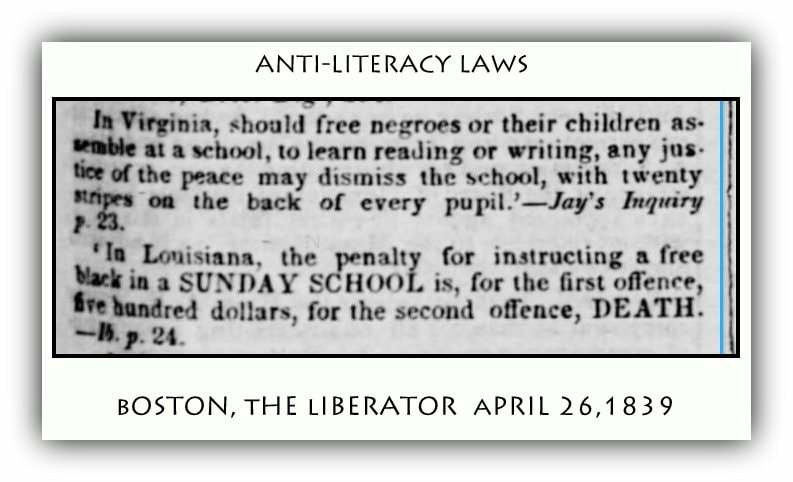Academic Divide: The history and origin of the Black-white achievement gap.
It is neither about you nor me but rather about the society we share today. How did our community come to be? Society is like a sea of people that are territorially bound. In a fair society, you are born free with equal rights and obligations safeguarded by a governing authority that obtains its legitimacy from you and me. Differences, such as skin color, gender, religion, sexual orientation and identification, and much more, however, reorganize our society into a heterogenic body of systems. Therefore, it is the governing body’s responsibility to ensure that each citizen, regardless of their societal affinity, is given equal protection under the law and equal opportunity to pursue happiness and express their God-given talents. A glance at the American society metric of success reflects back to us a constant fact: white at the top and black at the bottom. No other metric but the white-black academic achievement and attainment gap are more indicative of this phenomenon. Hence, the question: why, when, and how did this divide come to be? The former Soviet Union won the race to put the first human into orbit (space). We won the race to put the first human to the moon. We will not have won that race without the ingenuity of Katherine Johnson, daughter of former slaves. Our society is only as strong as our weakest link. Unfortunately, we cannot afford a weak link in a highly competitive world, especially if it stems from historical marginalization.
“The Anti-Literacy Law prohibits African Americans from learning how to read, write, or receive any writing materials (Bible not excepted). Violators of the law faced jail time for Blacks or 200 pounds for whites.”
In 1619, people of African descent did not consent to land on the shore of Jamestown . Instead, against their will, they became properties to their captors. They were commodities that could be bought, sold, or used inhumanely to transform raw materials into valuable goods to enrich their owners. Yet, although their tormentors took away their human and civil rights, they could still read, write, and aspire for freedom. So, it was not a surprise when enslaved blacks in Stono, South Carolina, rebelled, killing scores of white slaves owners. Consequently, a slew of harsh and inhumane laws (The Negro Acts), among which the Anti-Literacy Laws, were enacted to maintain and prosper the institution of slavery.

“The First Negro Slaves Brought to Jamestown, Virginia.”
Courtesy:https://progressive.org/latest/what-1619-means-to-me-powell-190827/

Anti-Literacy Laws.
Courtesy: https://www.livehonestly.com/the-liberator/anti-literacy-laws-and-education-in-georgia
The Anti-Literacy Law prohibits African Americans from learning how to read, write, or receive any writing materials (Bible not excepted). Violators of the law faced jail time for Blacks or 200 pounds for whites. In spite of these savage laws, enslaved Black people took tremendous risks to become literate; the same could be said for some good samaritan whites who helped them in the process. Does this not seem odd to the current stereotype – black people are not intelligent and/or don’t respect education – leveled against African Americans? Why would you stop someone from learning if you genuinely believe that it is futile? Unless you are afraid that they might rise and challenge their subordination. Remember Frederick Douglass? He was a runaway slave who taught himself how to read and write. And he later became an orator, a statement, and a strong advocate for the abolition of slavery. The vicious and inhumane exploitation of blacks could not go on in perpetuity unless the white enslaver kept them illiterate.
“Blacks students were intentionally prohibited from attending white schools. The education of the former slaves and their progeny was neither a priority of the local nor the federal government. There was no plan or design to educate negro students; it was a patchwork approach.”
In 1966, after the passage of the Civil Right Act, James Coleman published his landmark finding: Equality of Educational Opportunity (746 pages volumes). This extensive survey details the hardships minorities, especially African Americans, faced in the public school system. More than 650000 students and teachers and roughly 3000 schools nationwide participated in the study. This survey was one of the first social scientific undertakings that could demonstrate through empirical evidence the impact discriminatory practices in public schools had on the achievement of minority students (precisely blacks and indigenous) nationwide. The Coleman Report of 1966 was a mandate derived from the passage of the Civil Right Act of 1964. The report uncovered multiple findings. Coleman’s findings discovered that family background and community are more impactful on the students’ academic achievement, whereas school resources have little effect. As a reminder, we are just three years removed from the supreme court decision on Brown versus the board of education that proclaimed that segregation in public schools is unconstitutional. Before the supreme court outlawed segregation in public schools, the education of the negro or blacks student primarily relied on white philanthropists and black elite and grassroots.

Inside of One classroom school in Virginia during reconstruction (early twentieth century). Notice that all students are barefooted.
Courtesy:https://encyclopediavirginia.org/entries/slave-literacy-and-education-in-virginia/
These segregated schools trained formerly enslaved people for menial jobs. Blacks students were intentionally prohibited from attending white schools. The education of the former slaves and their progeny was neither a priority of the local nor the federal government. There was no plan or design to educate negro students; it was a patchwork approach. The prime illustration is the Tuskegee experiment. The Tuskegee Normal and Industrial Institute started as what we called today an experiential learning ground under the tutelage of Booker T. Washington. Since its inception in 1881, the original intent of the school was to teach former slaves functional skills in agriculture, domestic and mechanical works. Since then, the school has grown in size, academic discipline, and statute to become known today as Tuskegee University.
“…it took almost fifty years to close the Math and Reading gap nationwide by an average of 0.2 standard deviation points. If we keep at this pace, it will take roughly two and a half-century to close the gap.”
Fifty years after the release of the Coleman Report, the National Assessment of Educational Progress (NAEP) and the National Center for Education Statistics (NCES) duplicated a similar study in 2013. Unfortunately, as figure 4 depicts, most of the measures implemented over the past fifty years have done little to close the academic achievement gap between blacks students and their whites counterparts. Did you notice that the South is where the literacy gap is the highest? Could it be a vestige of slavery? Further inquiry into the data shows that it took almost fifty years to close the Math and Reading gap nationwide by an average of 0.2 standard deviation points. If we keep at this pace, it will take roughly two and a half-century to close the gap. I know you might empathize with the African American plight but equally might be saying to yourself, these black people need to quit complaining and do as any other minority group did to pick themselves up. Well, every other minority group besides African Americans came to this country voluntarily, unchained, hopeful, and looking forward to a brighter future. On the other hand, African Americans came to this country as commodities. They were chained, savagely packed as sardines in a can, terrified, and had nightmares as dreams. Many committed suicide during the voyage. Moreover, no other minority group besides African Americans have had to face centuries of tortures,

The Black-White Achievement Gap Persists
Courtesy: https://www.educationnext.org/what-matters-for-student-achievement/
work from sunset to sundown with no pay, being subject to rape, lynching, families being torn apart, bred and sold like cattle, relentlessly traumatized to this day with no psychological or psychiatric care, and commanded by the society not to complain but to carry on. It, therefore, came as no surprise that the two minority groups who are genuinely lagging behind the academic ladder are the sons and daughters of former slaves and the native Indians.
“…Company Works believes that the solution to the black-white achievement gap must be comprehensive, specific, and targeted.…. We cannot solve a problem that was intentionally designed with a panacea; the solution must be designed, purposeful, and directed.”
The proverbial cliché don’t judge the book by its cover could not be more appropriate to describe African Americans’ dynamic and evolving history and education in this country. The Federal, state governments, and local municipal designed and implemented many evidence-based research policies – classroom size, increase in minority teacher hiring, special education programs for at-risk students, National School Lunch Program (NSLP), After school programs, early literacy programs, culturally responsive practices, and many more – to improve students academic performance in general and that of minorities in particular. Unfortunately, the gap still persists. And no amount of money thrown at the issue seems to improve it either.
We at Company Works believe that the solution to the black-white achievement gap must be comprehensive, specific, and targeted. White slaves owners and the local and federal governments systematically denied former slaves and their progeny access for centuries to education. The desegregation of public schools is just half a century old. We cannot solve a problem that was intentionally designed with a panacea; the solution must be designed, purposeful, and directed. Unless one subscribes to the other school of thought that African Americans are an inferior class of citizens, any endeavor to close the academic achievement gap is futile.
Please stay tuned; this will be the subject of our next article.
Keywords: black and brown, people of color, racism, educational inequality, African American history, black and white achievement gap, equity

Elvin Seudieu
Instructional Coordinator
Sign up for blog updates!
Join my email list to receive updates and information.
